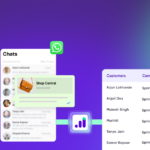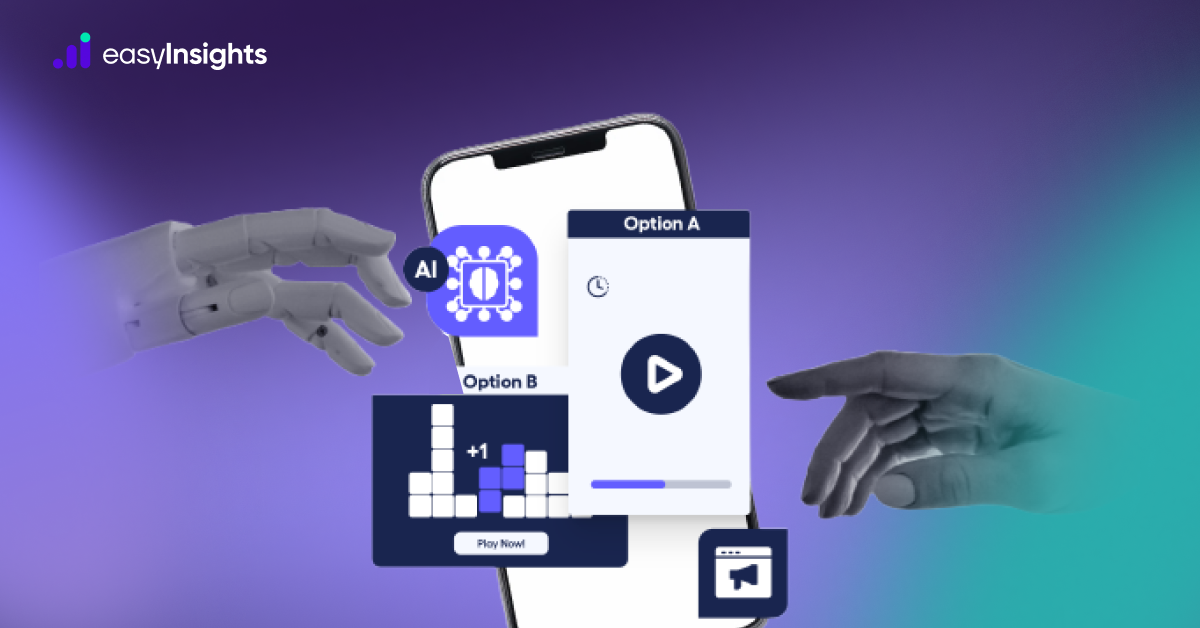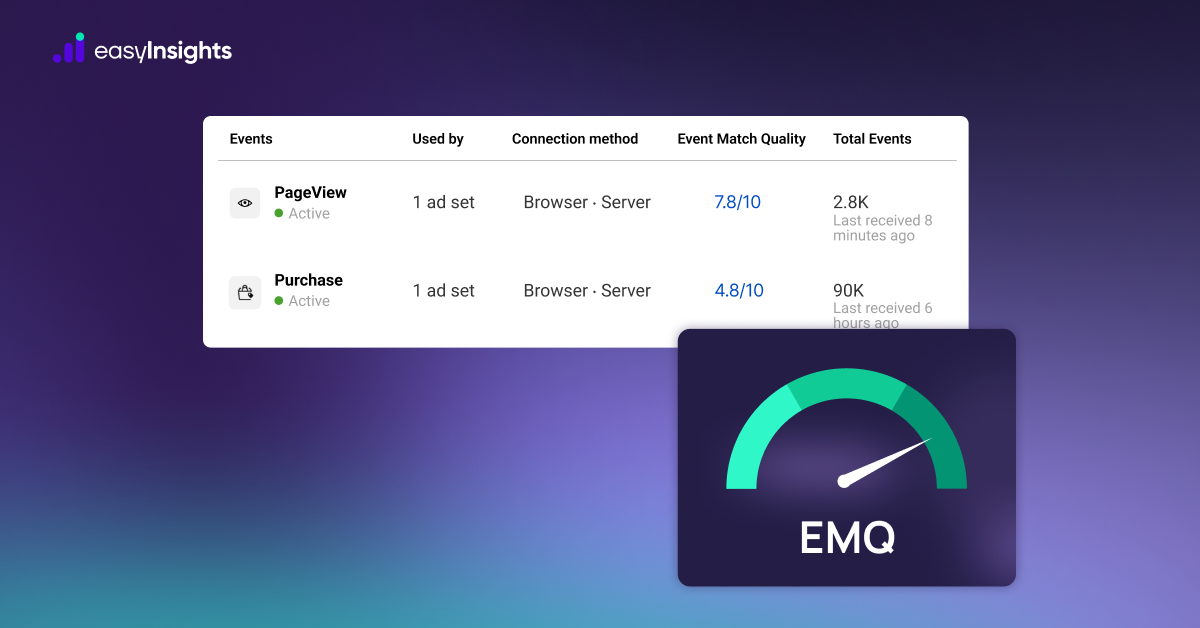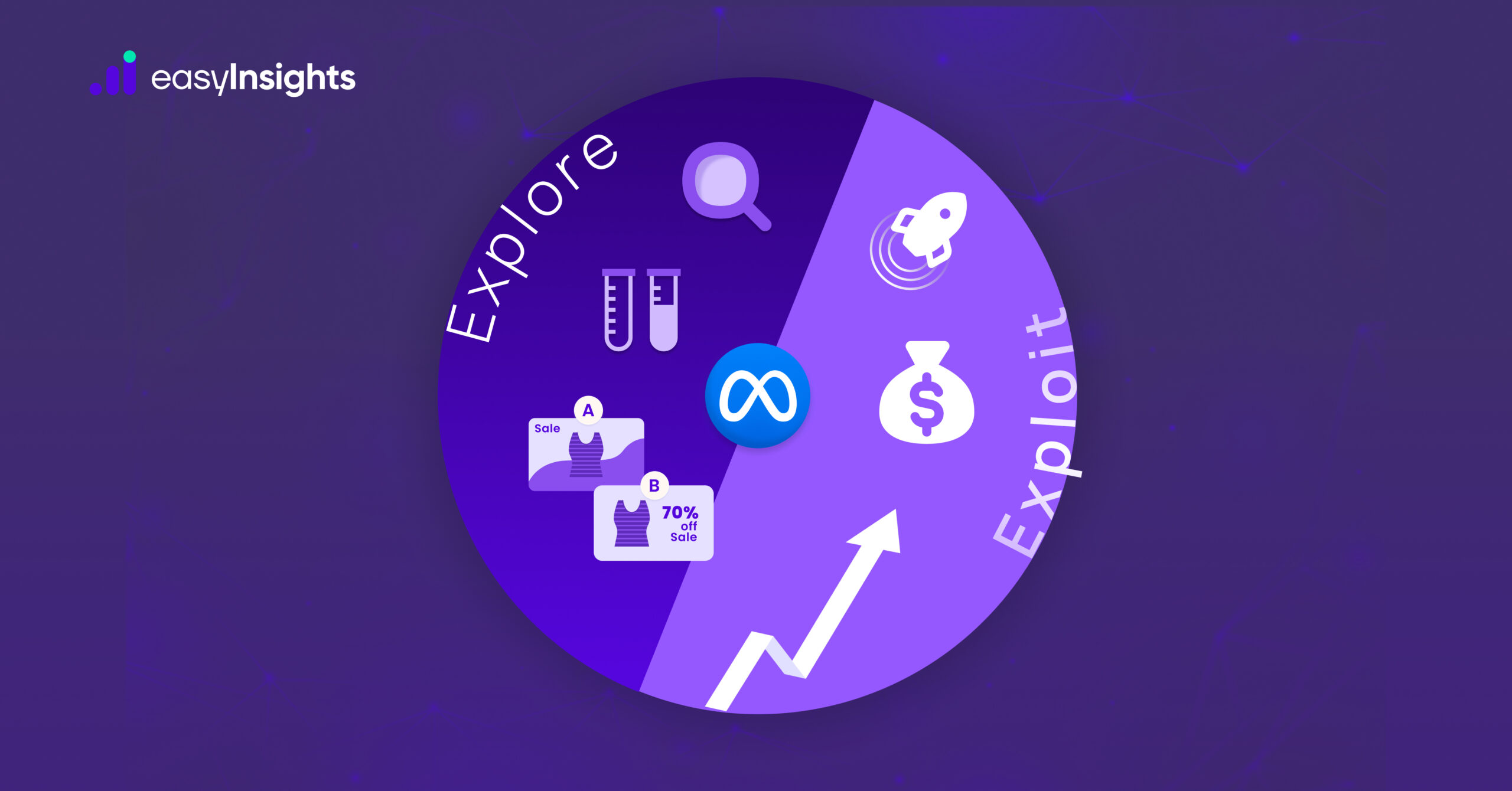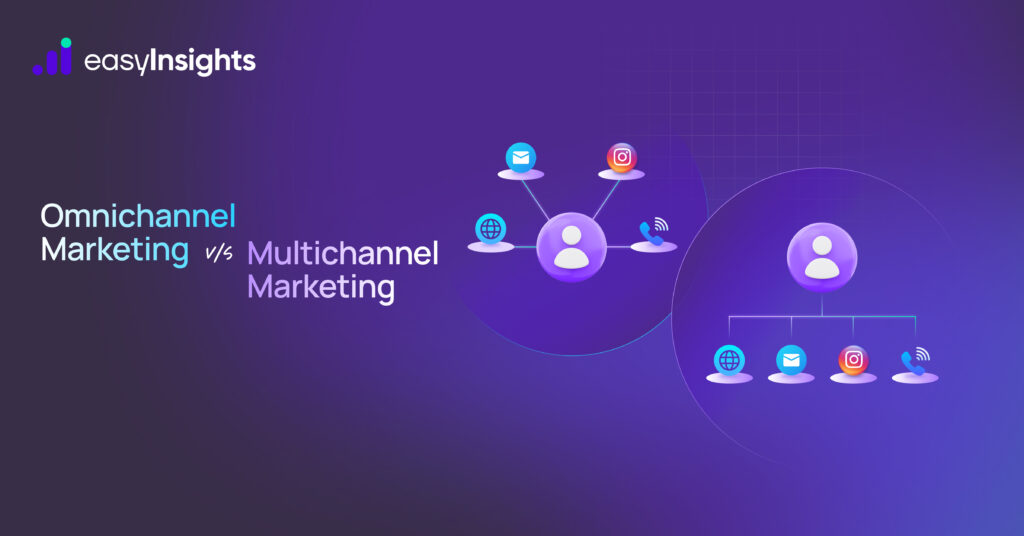
In today’s digital-first world, customers don’t engage with brands through a single platform. They browse products on Instagram, read reviews on Google, add items to cart via mobile apps, and sometimes even complete purchases in-store. For marketers, the challenge is not just being present on multiple channels but ensuring consistency and personalization across them.
That’s where omnichannel and multichannel marketing strategies come in. While both aim to reach customers across different platforms, they work very differently – and the impact on customer experience and business growth is significant.
In this blog, we’ll break down the differences between omnichannel and multichannel marketing, their benefits, challenges, and how to choose the right strategy for your business.
Jump ahead to:
What is Multichannel Marketing?
Multichannel marketing means using different platforms (channels) to engage customers – like social media, email, website, SMS, paid ads, and physical stores. Each channel operates independently, with its own goals, messages, and campaigns.
Example: A clothing brand might run Google Ads to drive traffic, post updates on Instagram, and send promotional emails. Each channel works to reach customers, but they may not always “talk” to each other.
Pros of Multichannel Marketing
- Wider reach – your brand appears on multiple platforms.
- Flexibility – easy to test campaigns channel by channel.
- Lower cost & simpler setup compared to omnichannel.
Cons of Multichannel Marketing
- Lack of consistency – customers may see disconnected messages.
- No single view of the customer journey.
- Harder to measure impact across touchpoints.
What is Omnichannel Marketing?
Omnichannel marketing goes beyond being present on multiple platforms. It focuses on delivering a seamless, integrated, and personalized experience across all touchpoints. All channels work together, sharing customer data and insights, so that interactions feel connected.
Example: Imagine a customer browses shoes on a brand’s website, later receives a personalized email with recommendations, and then sees a retargeting ad on Instagram offering a discount on the same shoes. When they visit the store, the salesperson already knows what they were browsing online.
That’s omnichannel marketing in action – consistent, data-driven, and customer-centric.
Pros of Omnichannel Marketing
- Unified brand experience across all touchpoints.
- Higher customer satisfaction & loyalty.
- Better conversion rates through personalization.
- Complete visibility into the customer journey.
Cons of Omnichannel Marketing
- Requires advanced data integration.
- Higher investment in technology and tools.
- Needs strong alignment between sales, marketing, and customer support.
Additional Reading: How to Use Marketing Attribution and Optimize Your ROI
Key Differences: Multichannel and Omnichannel Marketing
| Aspect | Multichannel Marketing | Omnichannel Marketing |
| Focus | Channel-based: maximizing presence across multiple platforms | Customer-based: creating a seamless, integrated journey |
| Messaging | May lack consistency, as channels operate in silos | Consistent, personalized, and unified across all channels |
| Customer Experience | Disconnected, effort-heavy, and sometimes fragmented | Effortless, smooth, and connected through automation & data |
| Approach | Reactive – responds to customer actions in isolation | Proactive – anticipates customer needs using data & automation |
| Goal | Short-term, transactional conversions | Long-term relationships, loyalty, and higher lifetime value |
When to Use Omnichannel vs Multichannel Marketing
The choice between omnichannel and multichannel should align with your business goals, resources, and customer needs. Key decision criteria include:
- Business Goals: If your main objective is to broaden reach or promote specific campaigns, a multichannel approach can work. Multichannel ensures your brand messages hit multiple platforms to increase visibility. On the other hand, if your goal is to enhance overall customer experience and loyalty, omnichannel is ideal.
- Budget and Resources: Omnichannel marketing is resource-intensive. It often requires new technology, data integration, and process changes. Small or mid-sized businesses with limited budgets might start with multichannel marketing – focusing efforts on one channel at a time – to build momentum. Multichannel can be more cost-effective initially. In time, successful multichannel brands can evolve toward omnichannel by adding integrations and automation.
- Customer Base and Expectations: For businesses with sophisticated customers who shop seamlessly across web, mobile, and in-store (common in eCommerce and retail), omnichannel can differentiate the brand. If customers expect personalization and consistency (e.g. loyalty program members, multi-device shoppers), use omnichannel to unify these touchpoints. If the customer journey is straightforward or mostly one-way (e.g. certain B2B products, niche markets), multichannel might suffice.
- Industry and Scale: Large enterprise and retail brands often benefit from omnichannel due to scale – they operate many stores and digital channels, so a unified approach boosts efficiencies and customer experience. Niche brands or startups might prioritize multichannel to test channels individually. Ultimately, many companies blend both: they start with multichannel tactics and progressively integrate them for an omnichannel future.
Which Strategy is Best for Marketers?
The short answer: Omnichannel marketing is the clear winner for long-term growth – but the best choice ultimately depends on your goals, resources, and maturity stage as a marketer.
- Multichannel marketing is a good starting point if:
- Your primary goal is to increase visibility and reach.
- You are testing different platforms to identify where your audience is most active.
- You have limited resources or are just beginning to scale marketing campaigns.
- Omnichannel marketing is the best approach if:
- You want to deliver consistent, personalized customer experiences.
- Your brand aims for stronger loyalty, retention, and higher customer lifetime value (CLV).
- You are ready to integrate data across platforms and invest in tools that enable unified tracking and attribution (like EasyInsights).
How EasyInsights Can Help Build Omnichannel Strategies
One of the biggest challenges brands face today is fragmented data. Ads, analytics, CRM, and offline sales data often sit in silos, making it nearly impossible to get a unified view of the customer journey. Without this, true omnichannel marketing can’t exist.
That’s where EasyInsights comes in. Our platform is designed to bridge these gaps and empower marketers to deliver consistent, personalized, and data-driven experiences across every touchpoint. Here’s how we make it possible:
1. Unified Customer Journeys
Instead of juggling data from disconnected platforms, EasyInsights gives you a single, comprehensive view of every customer interaction – from the first ad click to the final purchase and beyond. This visibility allows you to understand where your customers come from, how they interact with different channels, and what ultimately drives them to convert.
2. Advanced Attribution Models
Traditional attribution often credits the last click, undervaluing the earlier touchpoints that shaped the customer’s decision. EasyInsights offers advanced attribution models – including multitouch attribution to assign credit accurately across the entire journey. This means you can invest smarter, optimize campaigns more effectively, and prove the true ROI of your marketing efforts.
3. Seamless Integrations
Omnichannel strategies require smooth data flow between systems. EasyInsights provides out-of-the-box integrations with leading ad platforms (Google, Meta, LinkedIn, and more), analytics tools, CRMs, and offline sources. This eliminates data silos and ensures every channel work s together, not in isolation.
4. Actionable Insights in Real-Time
Data is only powerful when it leads to action. EasyInsights delivers real-time insights into campaign performance, customer behavior, and channel effectiveness. With these insights, you can personalize experiences, fine-tune targeting, and optimize campaigns while they’re still running – maximizing impact.
Conclusion
In the end, both omnichannel and multichannel approaches are tools – what makes the difference is how you use them. The real competitive edge lies in your ability to evolve. A brand that starts with multichannel but continuously works toward omnichannel maturity will always stay ahead of shifting customer expectations.
The future of marketing won’t be defined by how many channels you’re on, but by how seamlessly those channels connect to create trust and loyalty. For marketers ready to lead in this future, the move isn’t optional – it’s inevitable. And with platforms like EasyInsights, you don’t just connect your channels – you connect the entire customer journey, turning complexity into clarity and insights into action.
Growth starts with insights – get your EasyInsights demo today!



